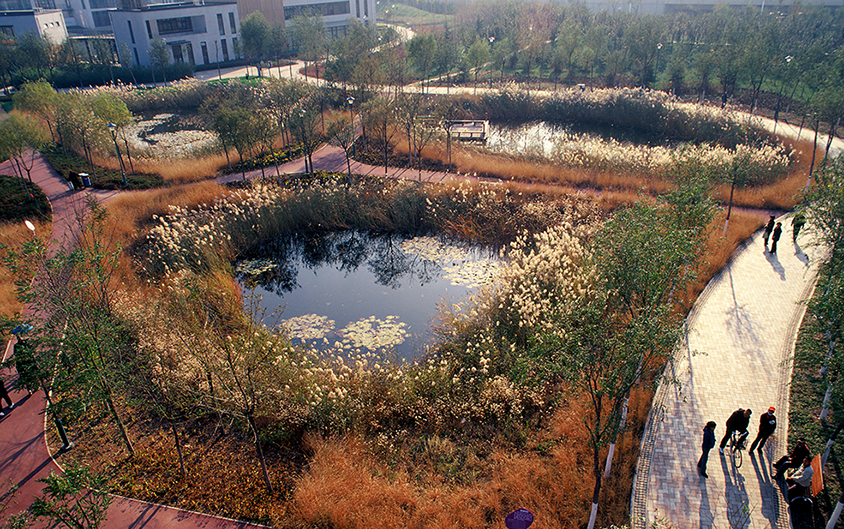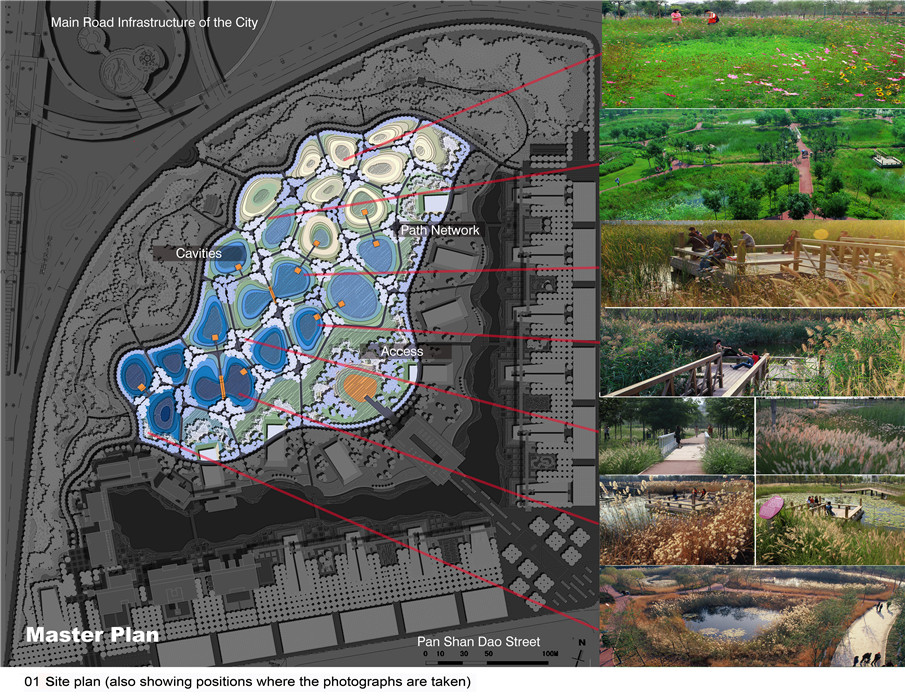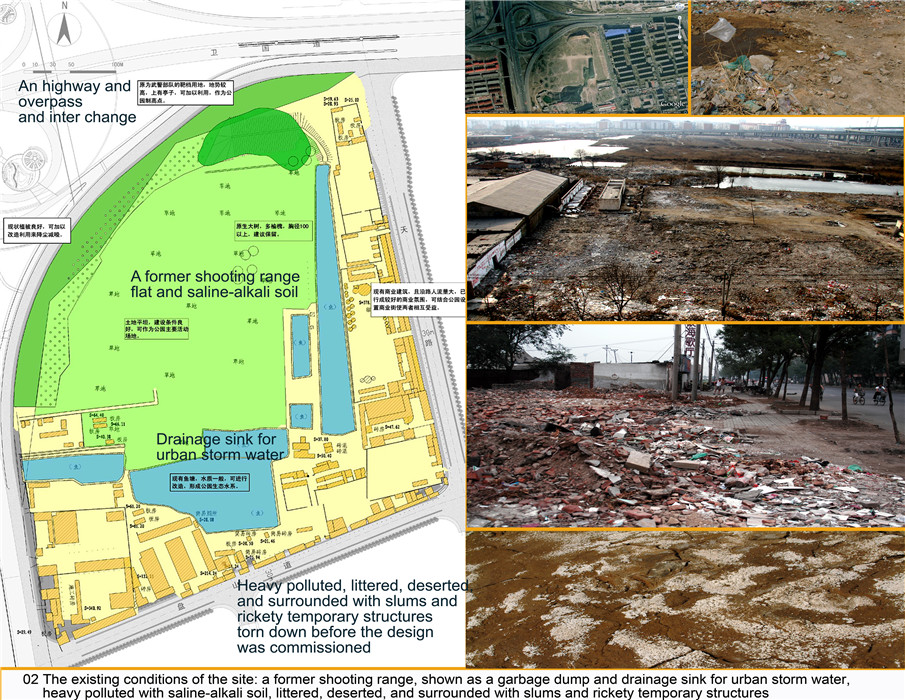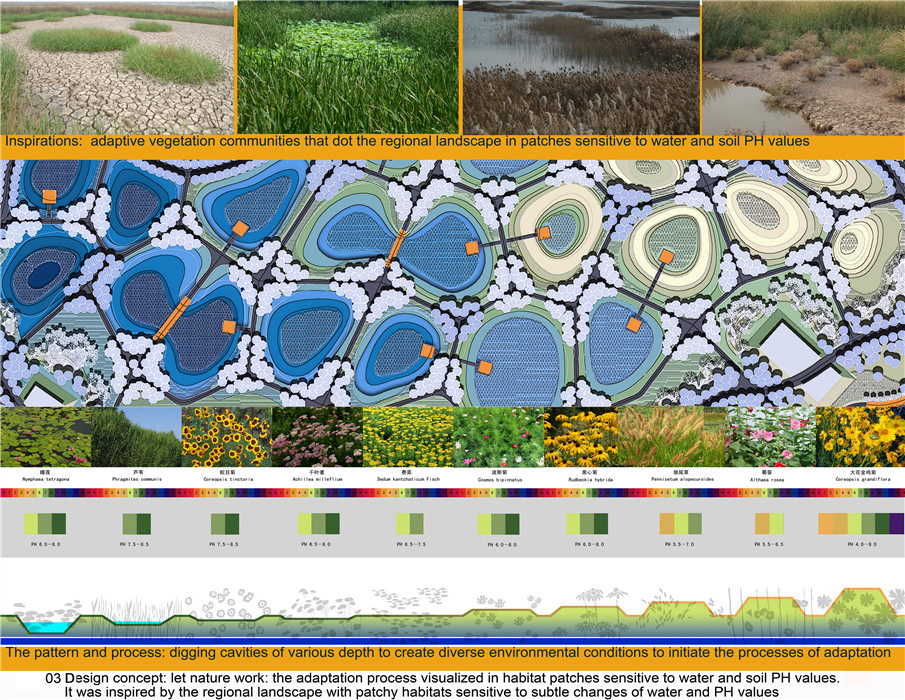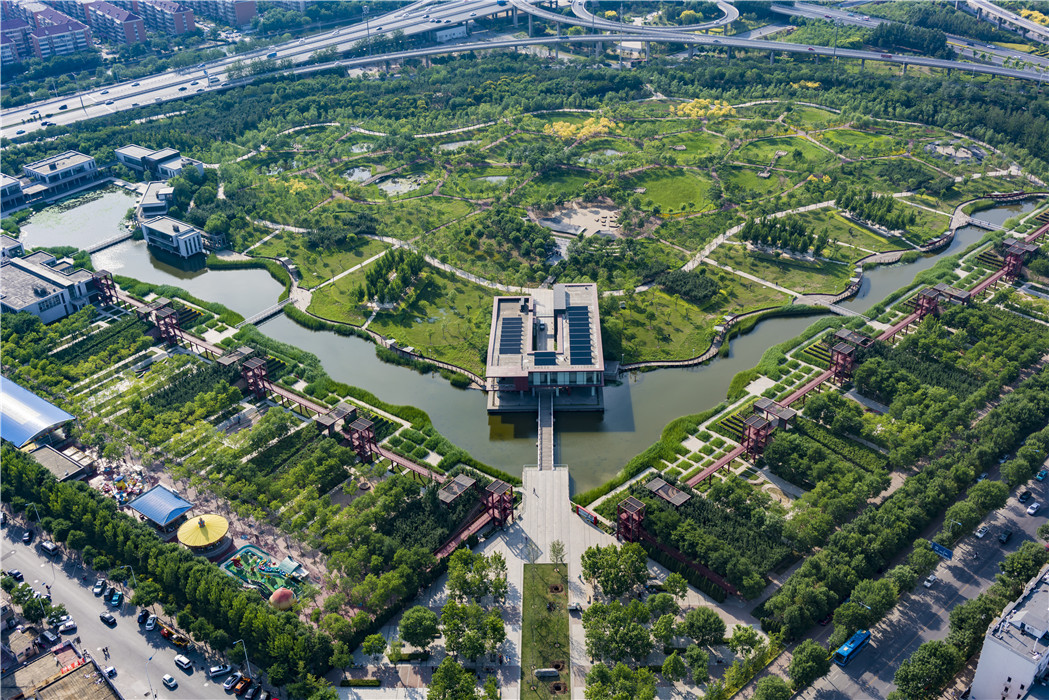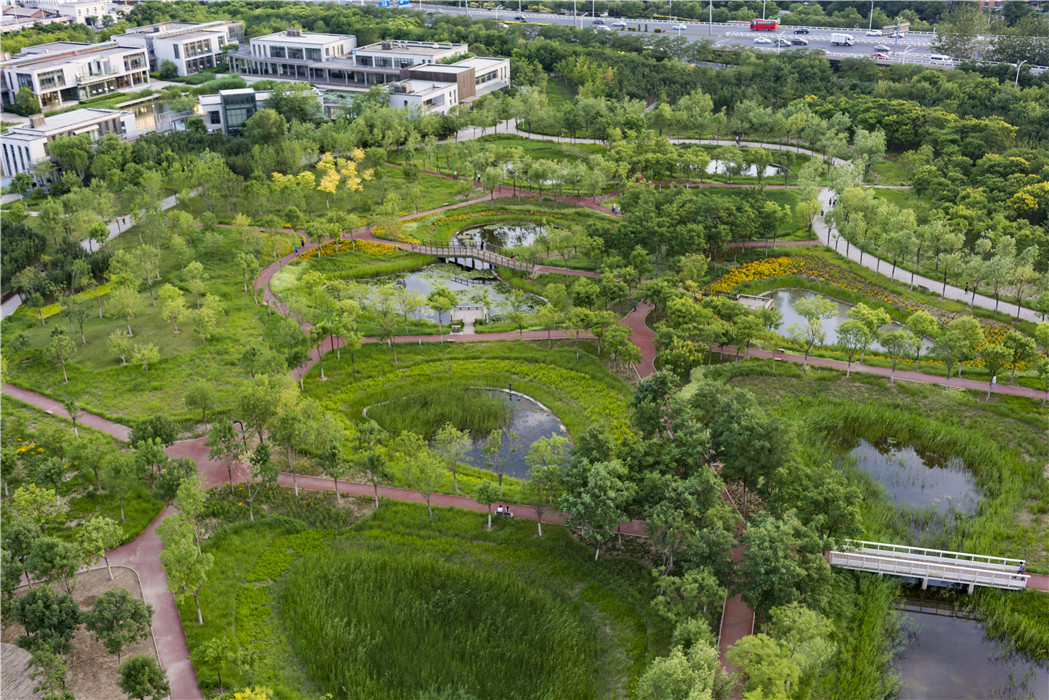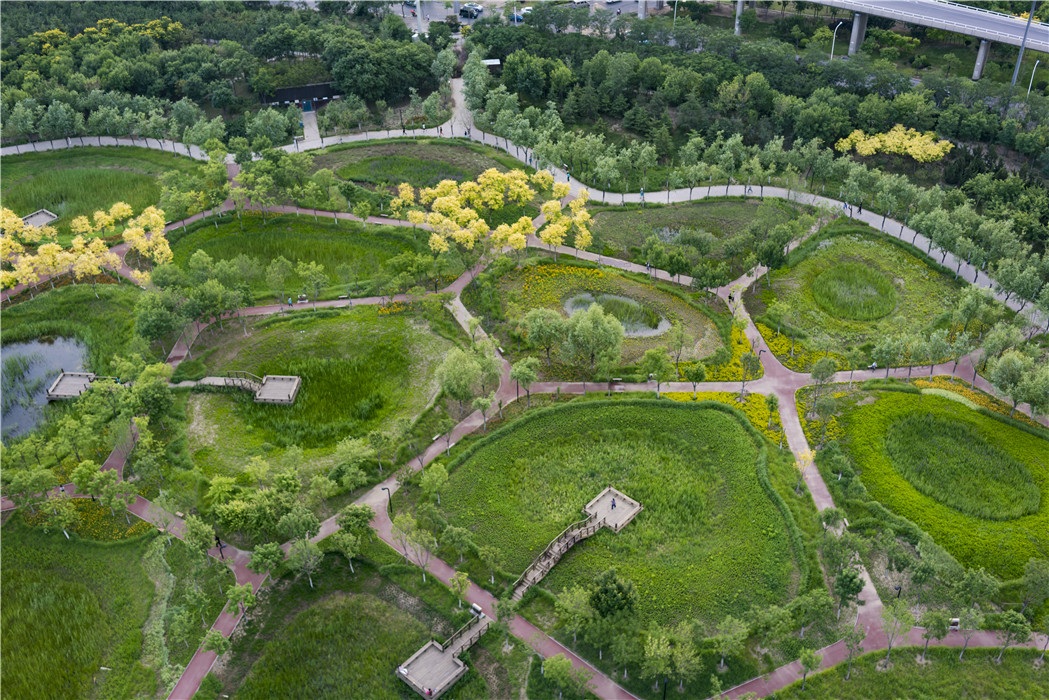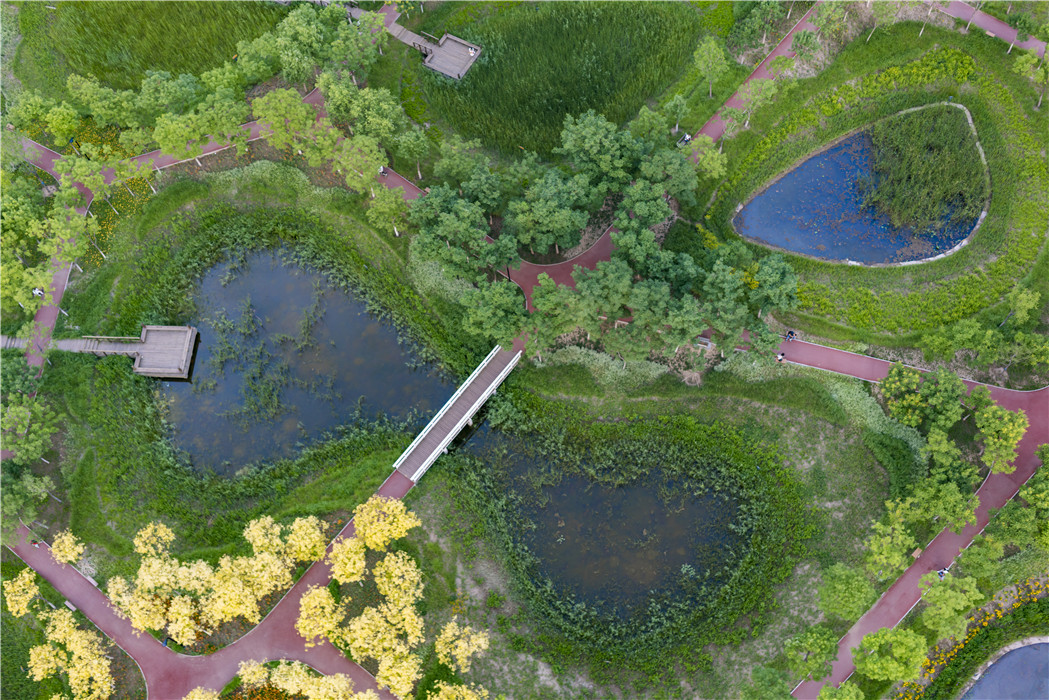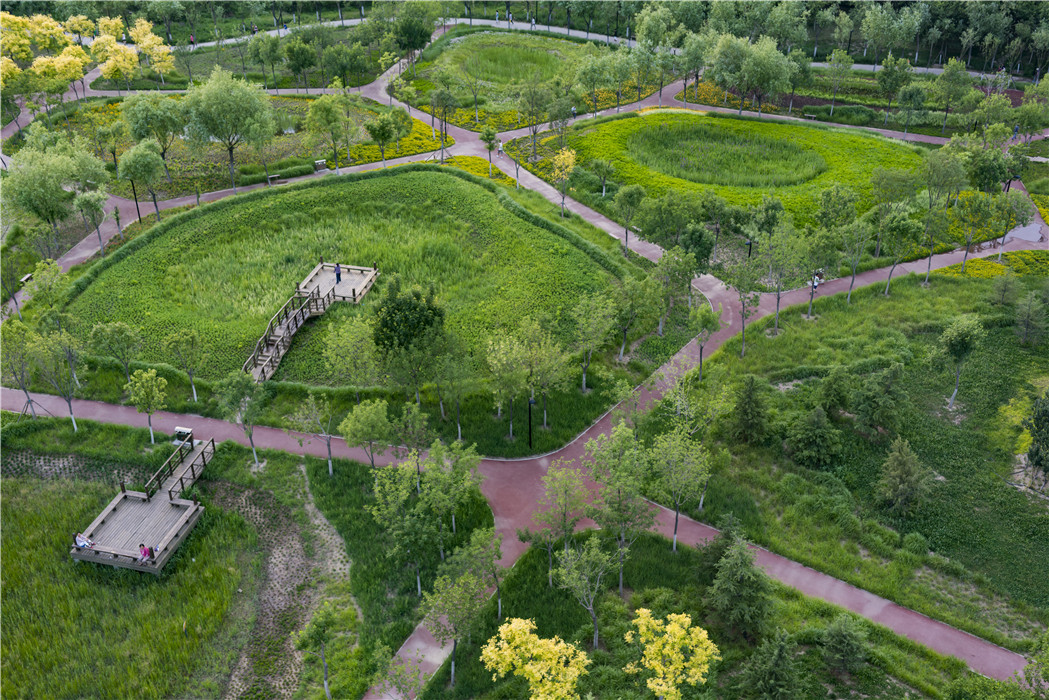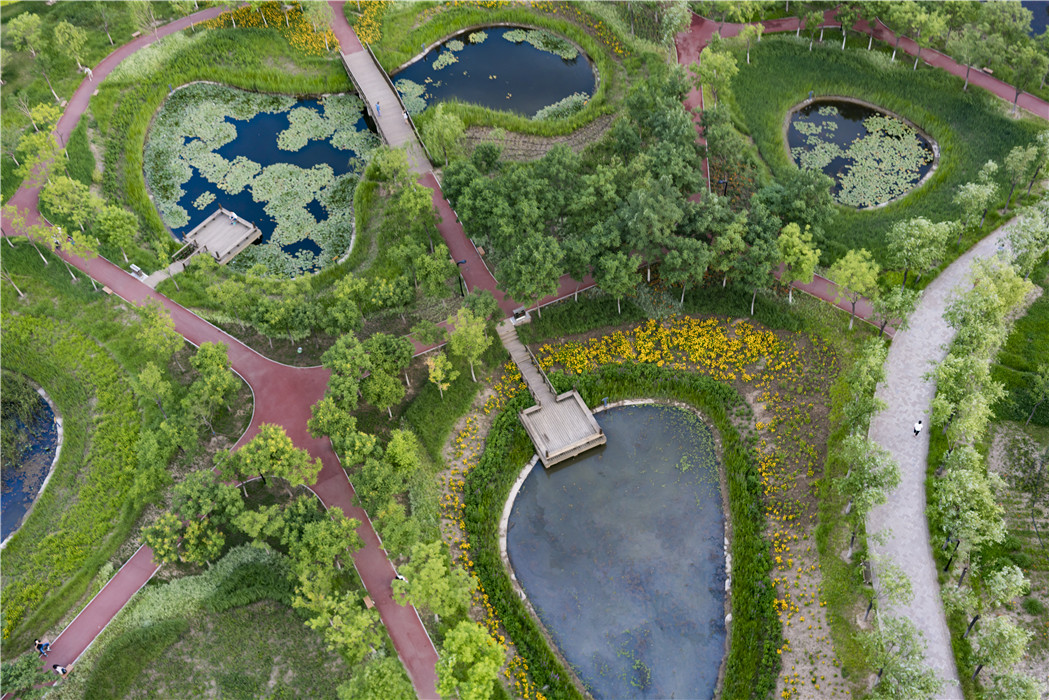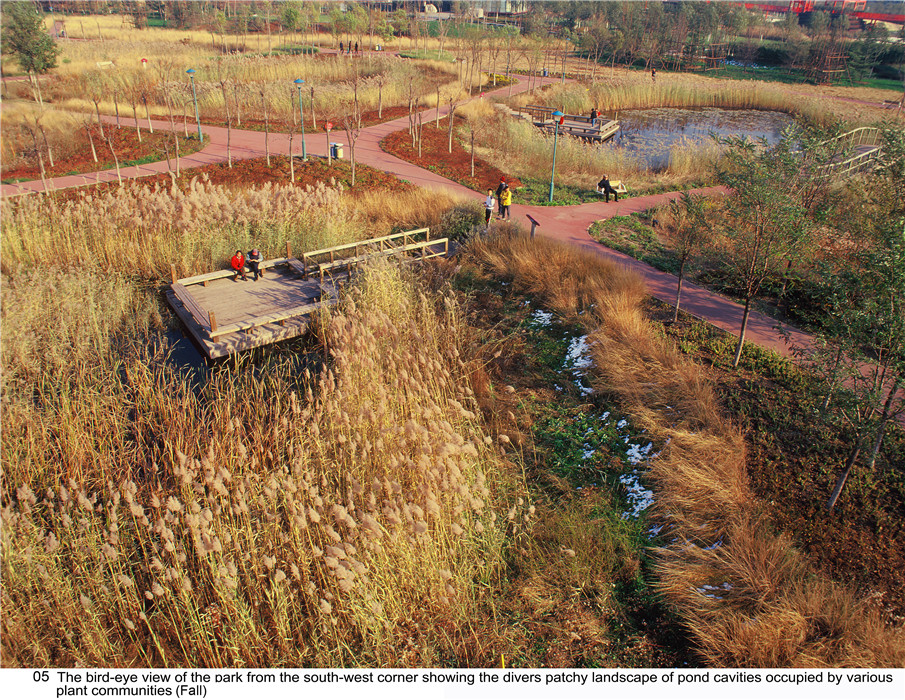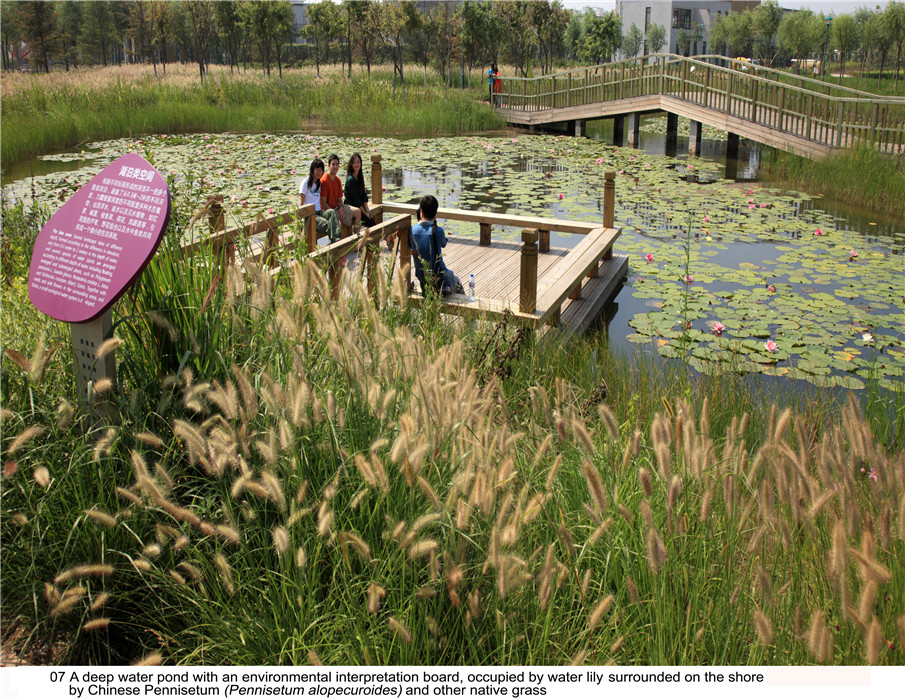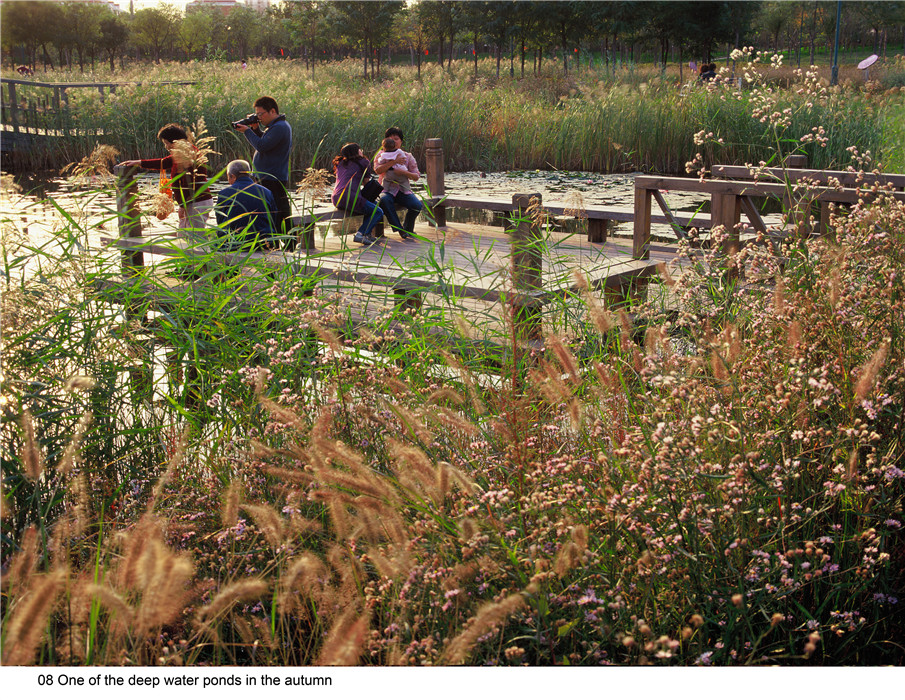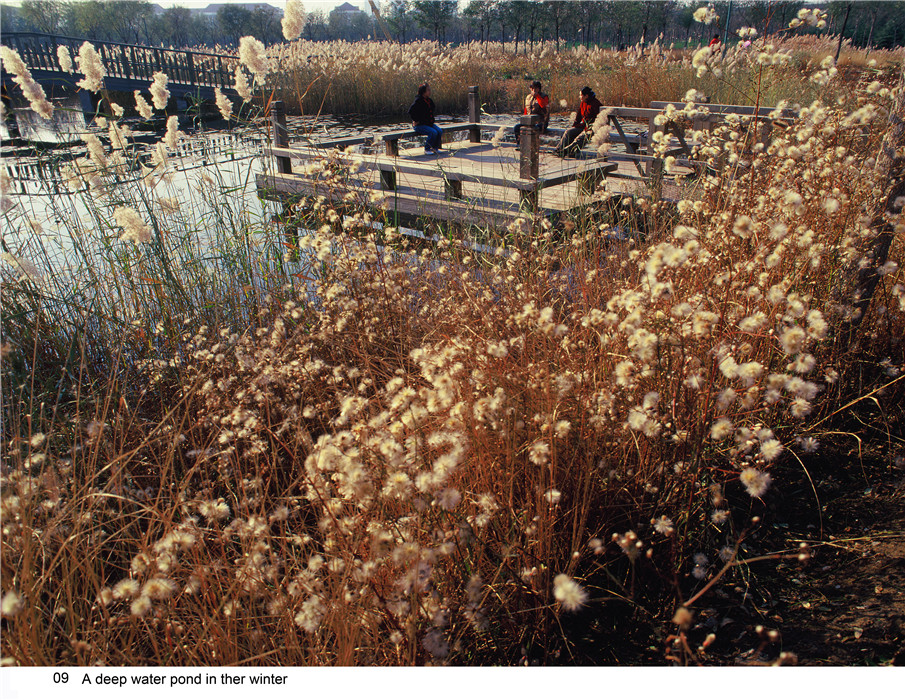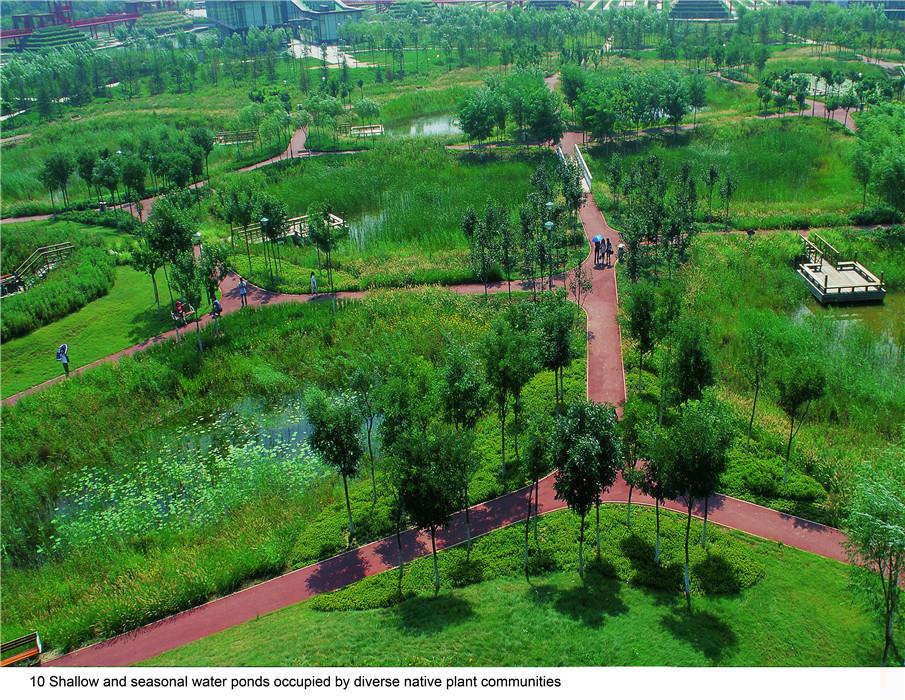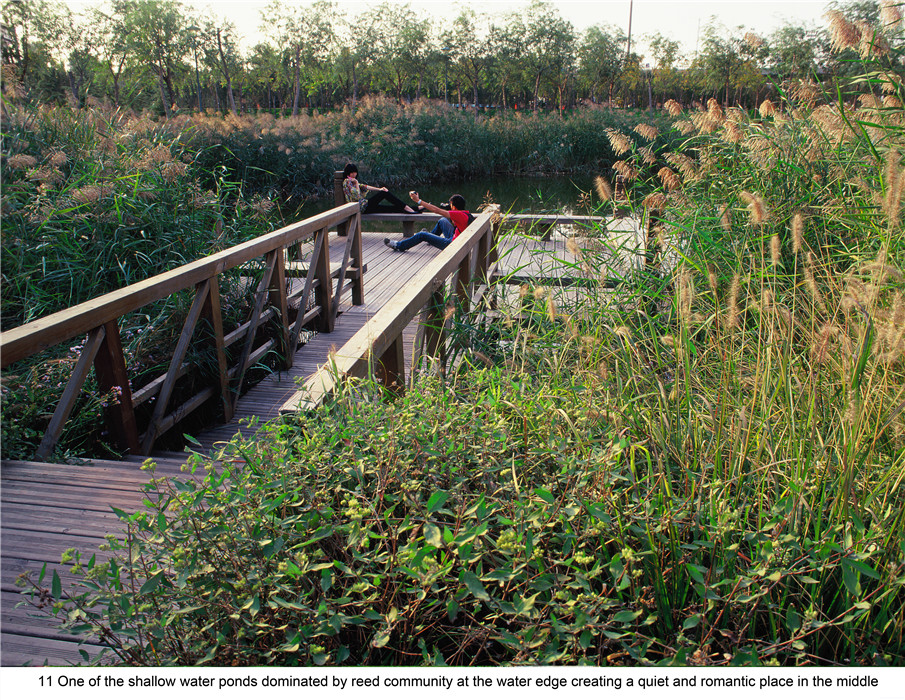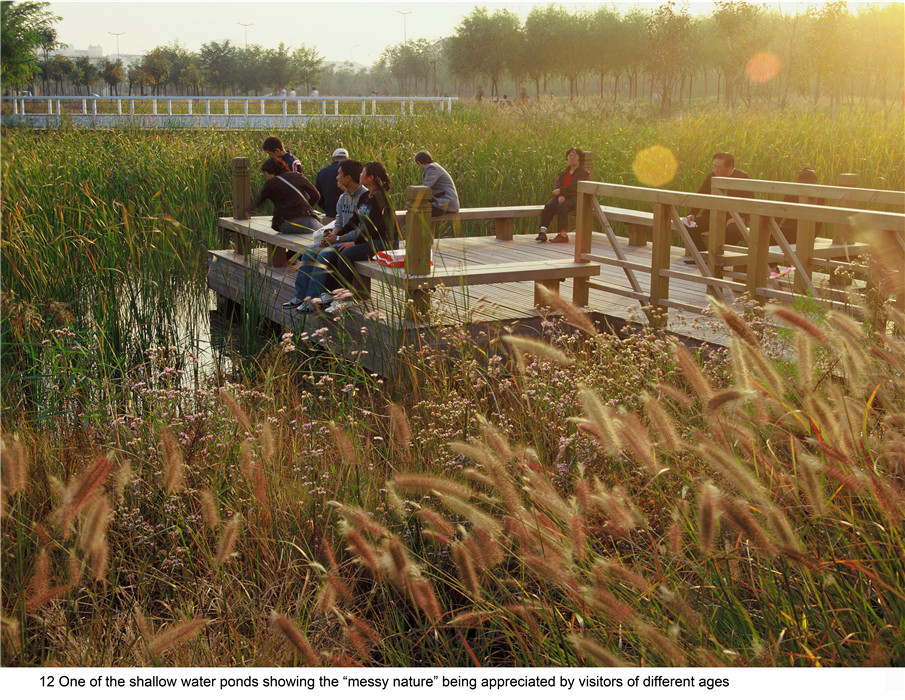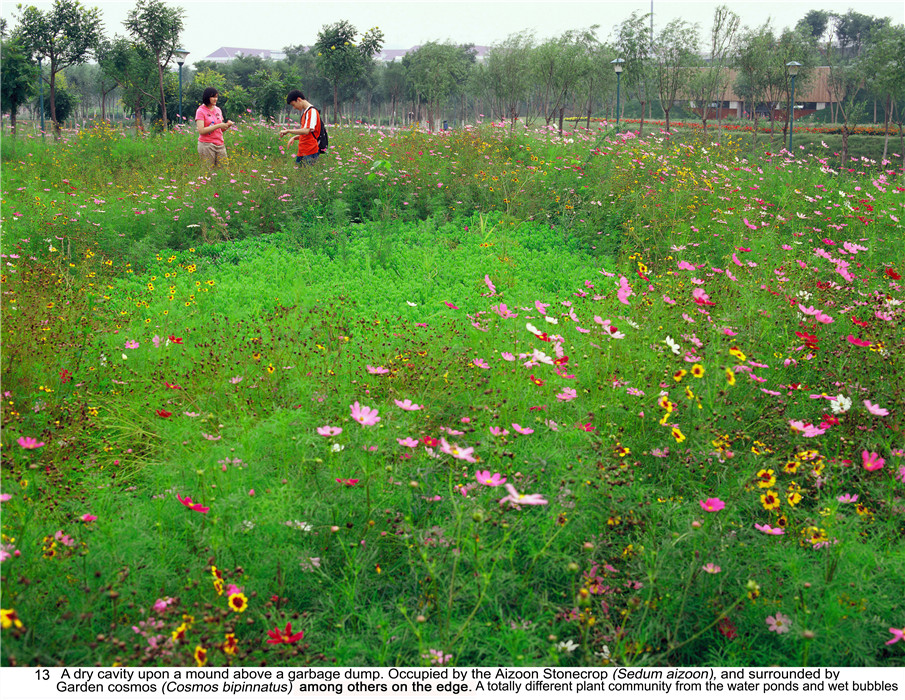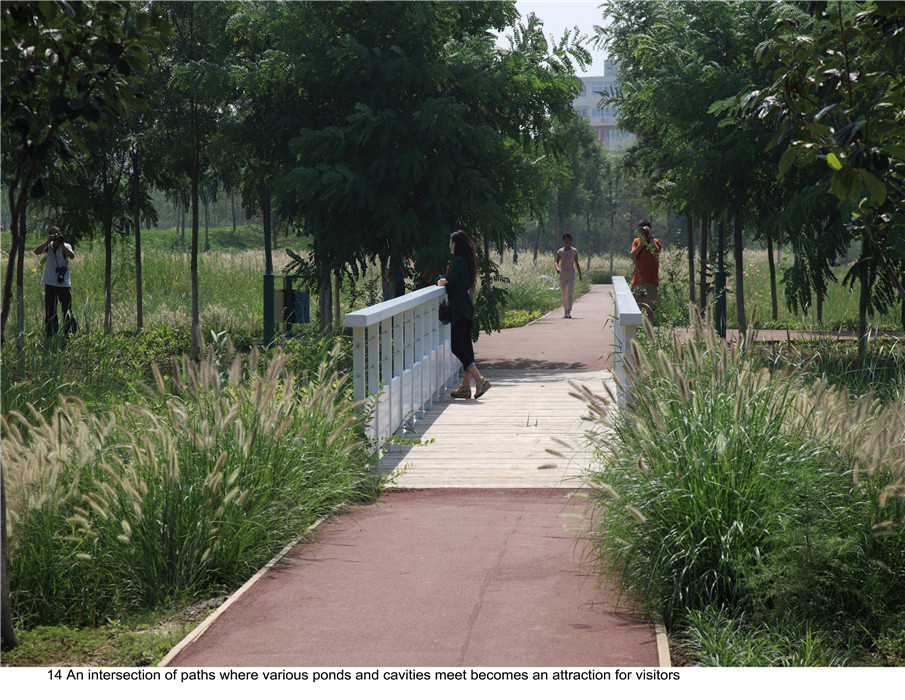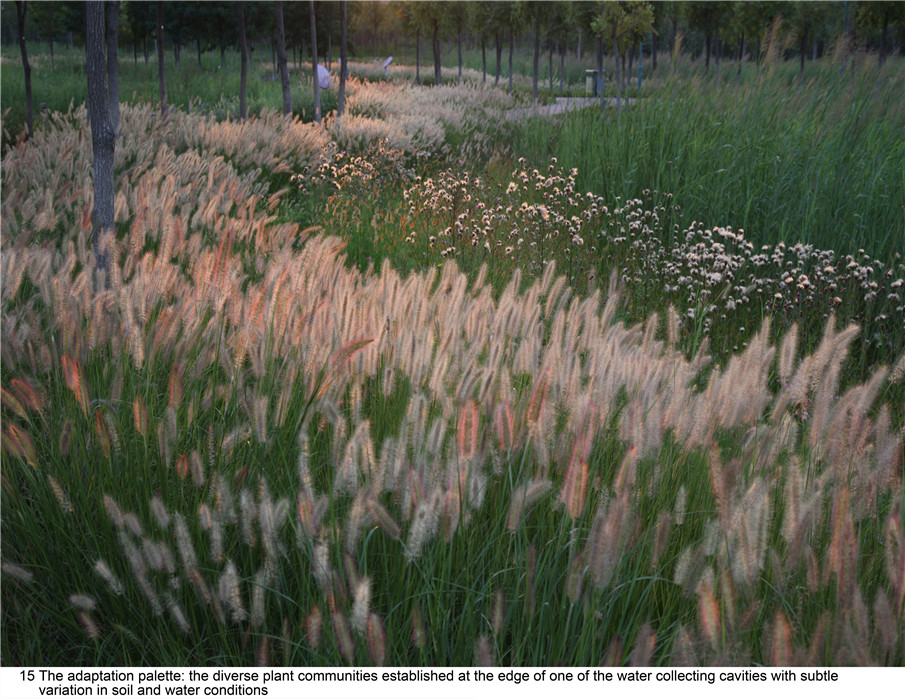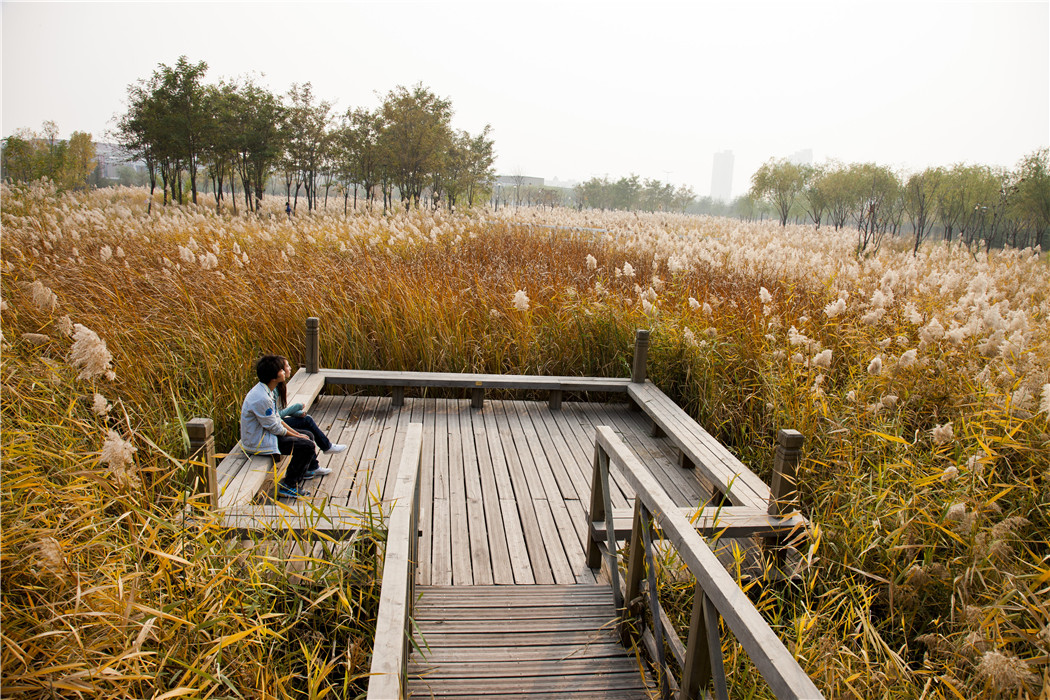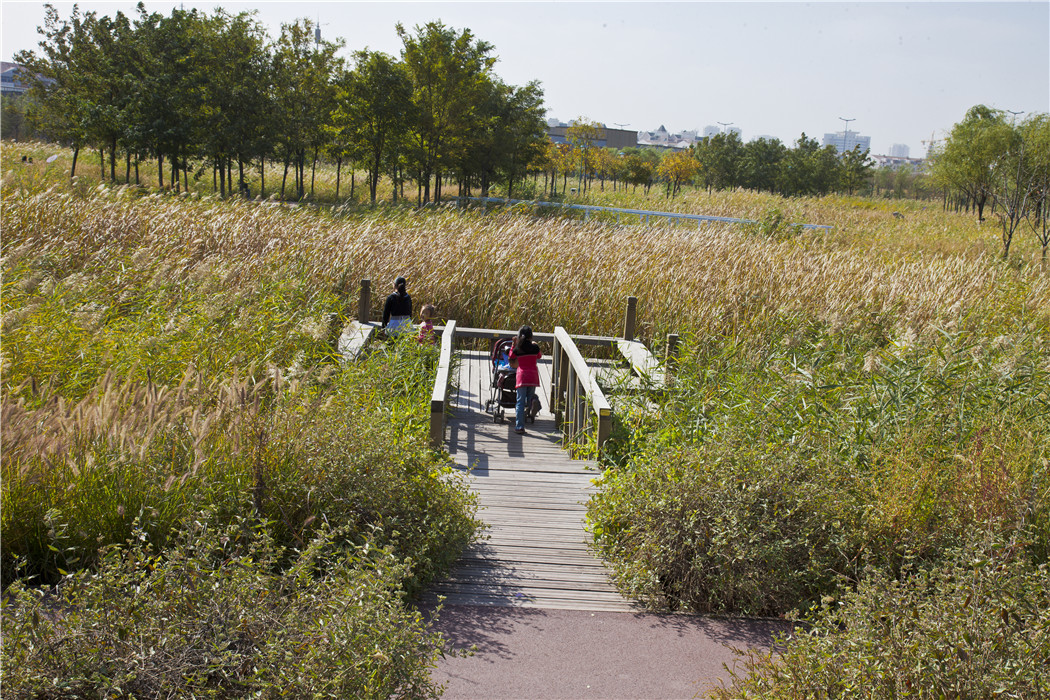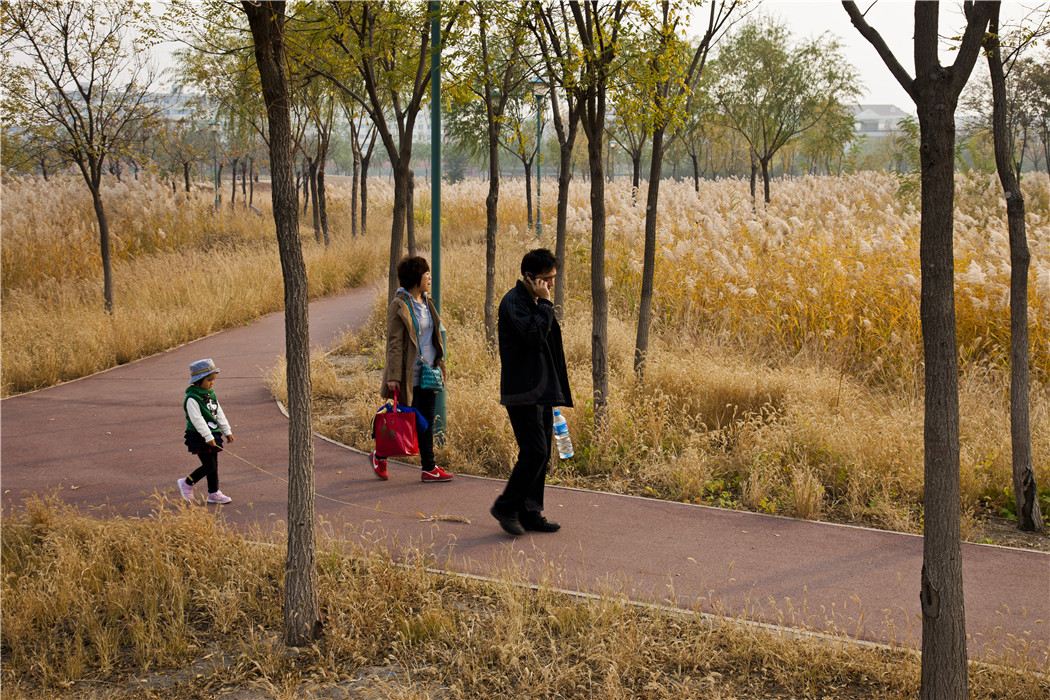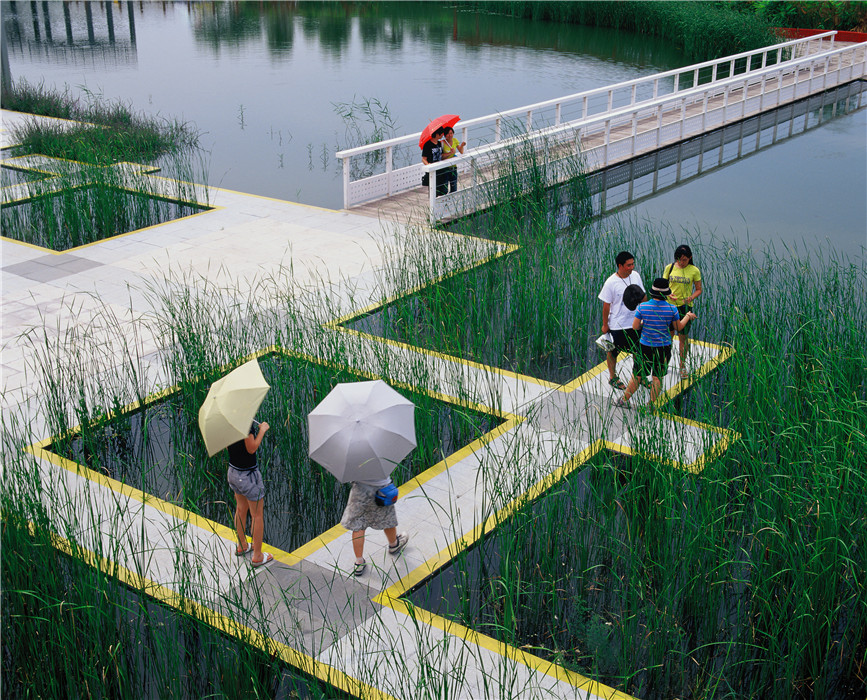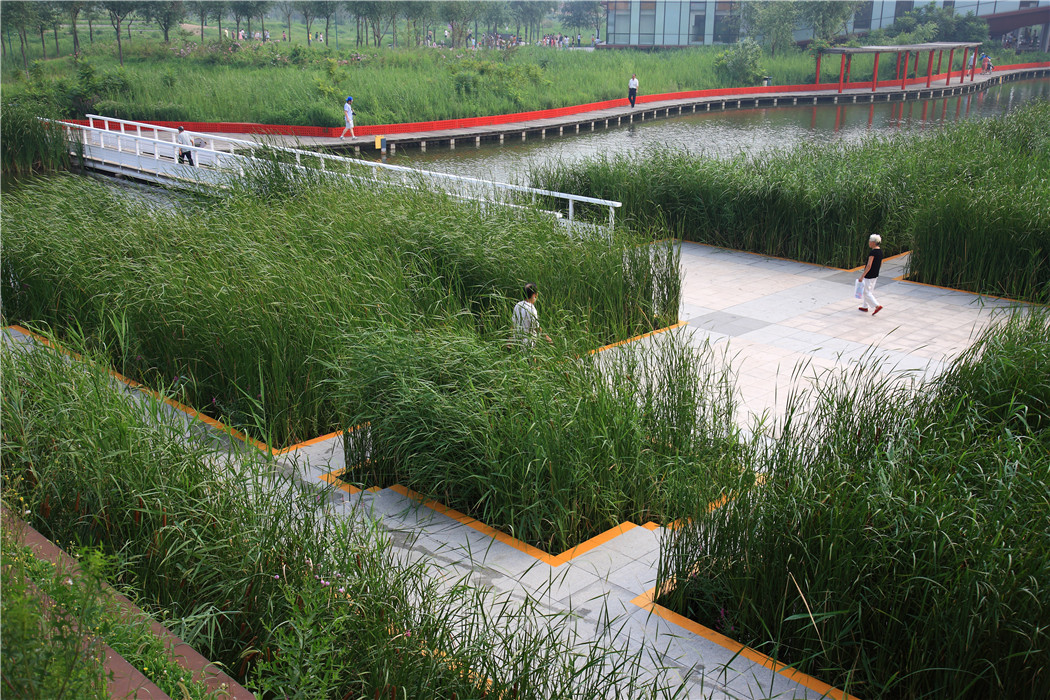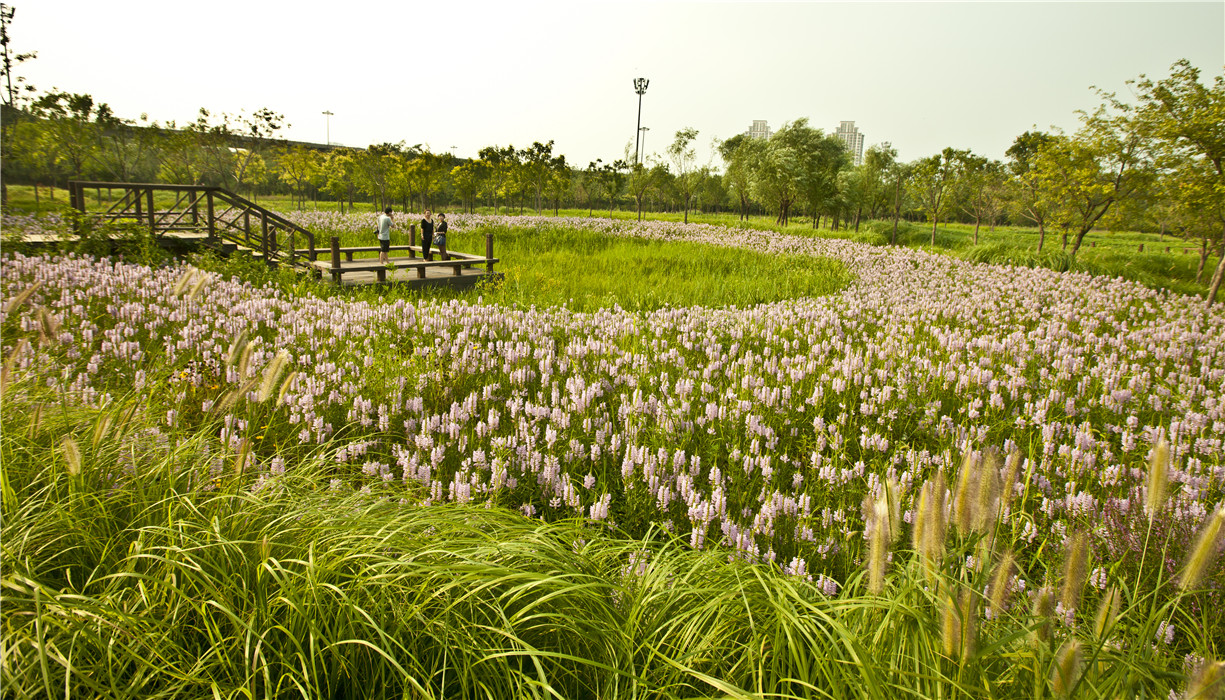Tianjin Qiaoyuan Wetland Park
Project Information
- Project Location:
- China Tianjin
- Project Scale:
- 22 Hectares
- Design Time:
- October 2005
- Build Time:
- 2008
- Client:
- Environment construction and Investment Co., Ltd, Tianjin City
- Award List:
- 2010 ASLA Honor Awards, 2009 World's Best Landscape of the World Architecture Festival Awards, 2009 Fine Swiss Science and Technology Awards, Landscape Planning and Design Awards
- Related Papers
Project Profile
1. Project Statement
Through Regenerative Design and by changing landforms, the natural process of plant adaptation and community evolution is introduced to transform a former deserted shooting range used as a garbage dump, into a low maintenance urban park; providing diverse nature’s services for the city including containing and purifying storm water; improving the saline-alkali soil, providing opportunities for environmental education and creating a cherished aesthetic experience.
2. Objective and Challenge
This is a park of twenty-two hectares (fifty-four acres) in the northern coastal city of Tianjin, China. Rapid urbanization had changed a peripheral shooting range into a garbage dump and drainage sink for urban storm water; the site was heavy polluted, littered, deserted, and surrounded with slums and temporary rickety structures, which had been torn down before the design was commissioned. The soil is quite saline and alkaline. Densely populated at the south and east boundaries, the site is bounded on the west and north sides by a highway and an overpass.
In early 2006, in response to residents’ call for environmental improvement of the site, the municipal government of Tianjin contracted the landscape architect with the difficult task of an immediate transformation of this degraded site.
3. Design Strategy
The overall design goal for this project is to create a park that can provide a diversity of nature’s services for the city and the surrounding urban residents, including: containing and purifying urban storm water; improving the saline-alkali soil through natural processes; recovering the regional landscape with low maintenance native vegetation; providing opportunities for environmental education about native landscapes and natural systems, storm water management, soil improvement, and landscape sustainability; creating a cherished aesthetic experience
The regional landscape is flat and was once rich in wetlands and salt marshes, which had been mostly destroyed by decades of urban development and infrastructure construction. Though it is difficult to grow trees in the saline-alkali soil, the ground cover and wetland vegetation are rich and vary in response to subtle changes in the water table and PH values.
Inspired by the adaptive vegetation communities that dotted the landscape in this region, the solution for this park was developed called The Adaptation Palettes, which was designed to let the nature work. A simple landscape Regenerative Design strategy was devised, one that included digging twenty-one pond cavities varying from ten to forty meters in diameter, and from one to five meters in depth. The garbage was handled in the earth work. Some cavities are below ground level and some above on mounds.
Through the raining season and due to the shallow underground water, some cavities turn into water ponds, some into wetlands, some into seasonal pool, and some stay as dry cavities. Through seasons’ rain wash and filtration, the saline-alkali soil of the dry cavities get improved, while nutrients deposit in the deeper ponds that catch storm water runoff.
Diverse habitats were created and the natural process of plant adaptation and community evolution were initiated. Seeds of mixed plant species were sowed initially to start the vegetation, and other native species were allowed to grow wherever suitable. Through the seasons’ evolution, patches of unique vegetation establish in correspondence to the individual wet or dry cavities, and various PH values. The allotment landscape reflects the regional water- and alkaline-sensitive vegetation.
Within some of the cavities are wood platforms that allow visitors to sit right in the middle of the vegetation patches. A network of red-colored asphalt was designed to weave through the palettes and allow visitors to stroll through the patchy landscape. Along the paths is an environmental interpretation system that gives descriptions of natural patterns, processes, and native species.
4. Conclusion
The park achieved its goals in just two years. Storm water is retained in the water cavities, allowing diverse water-sensitive communities to evolve. Seasonal changes in plant species occur and integrate with the beauty of the “messy” native landscape, attracting thousands of visitors every day. In the first two month of its opening, from the October to November of 2008, about 200,000 people visited the park. It is a successful park which changes its landscape throughout the year period, constantly visited by the community, needs very little maintenance.
This project helps to define the new aesthetics of landscape today, defined by a continuous evolving process. Untidy forms, unplanned biodiversity and nature’s “messiness” keep ongoing, letting plants live and expose their genuine beauty to enrich the landscape. The ecology-driven Adaptation Palettes has become a valuable and remarkable site of the community of Tianjin.
